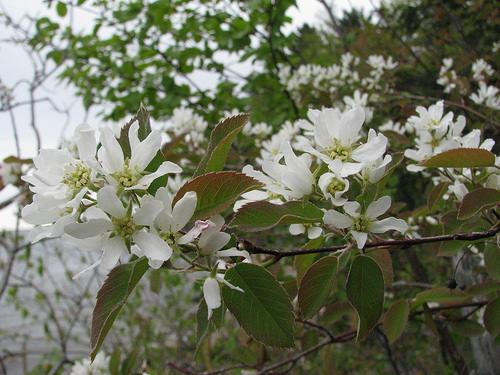Three-Season Interest With Serviceberry in Your Landscape
go.ncsu.edu/readext?589048
en Español / em Português
El inglés es el idioma de control de esta página. En la medida en que haya algún conflicto entre la traducción al inglés y la traducción, el inglés prevalece.
Al hacer clic en el enlace de traducción se activa un servicio de traducción gratuito para convertir la página al español. Al igual que con cualquier traducción por Internet, la conversión no es sensible al contexto y puede que no traduzca el texto en su significado original. NC State Extension no garantiza la exactitud del texto traducido. Por favor, tenga en cuenta que algunas aplicaciones y/o servicios pueden no funcionar como se espera cuando se traducen.
Português
Inglês é o idioma de controle desta página. Na medida que haja algum conflito entre o texto original em Inglês e a tradução, o Inglês prevalece.
Ao clicar no link de tradução, um serviço gratuito de tradução será ativado para converter a página para o Português. Como em qualquer tradução pela internet, a conversão não é sensivel ao contexto e pode não ocorrer a tradução para o significado orginal. O serviço de Extensão da Carolina do Norte (NC State Extension) não garante a exatidão do texto traduzido. Por favor, observe que algumas funções ou serviços podem não funcionar como esperado após a tradução.
English
English is the controlling language of this page. To the extent there is any conflict between the English text and the translation, English controls.
Clicking on the translation link activates a free translation service to convert the page to Spanish. As with any Internet translation, the conversion is not context-sensitive and may not translate the text to its original meaning. NC State Extension does not guarantee the accuracy of the translated text. Please note that some applications and/or services may not function as expected when translated.
Collapse ▲When considering plants for your landscape, it is good to consider what interest the plant might bring in all seasons. A plant favorite for the Piedmont of NC is Amelanchier arborea, often called “Serviceberry.” A native plant to North Carolina, Serviceberry provides three-season interests with its spring pink/white flowers, beautiful, edible fruits, and the impressive fall color.
Amelanchier species are typically multi-trunked small trees, reaching 20-25ft quickly. Attracting birds and pollinators, this plant is a must for the native or natural garden. The red-orange foliage in fall color is recognized by many as one of the most spectacular fall landscape plants. The small black-to-red fruit is often used in jams, jellies, and pies.
Serviceberry prefers part-sun to full-sun, moderately moist to dry soil. The trees tend to be deer-resistant, which is becoming increasingly important in the Piedmont of NC. Selected varieties and newer hybrids are available, such as ‘Autumn Brilliance’.


Select Amelanchier species plant for a native addition to your landscape. Providing for pollinators, wildlife, and fruit for the home, Serviceberry is a sure winner. Find more information on Amelanchier arborea and other great plants for North Carolina.




